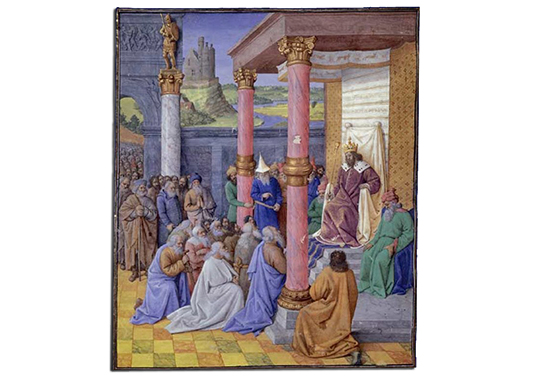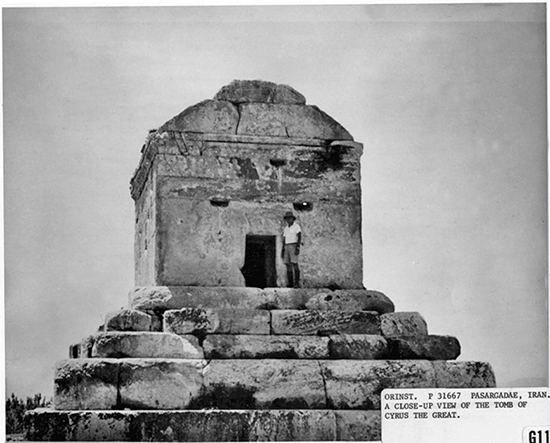|

Cyrus II the Great 590(?)-529 BC
|
|
Image
Above
Cyrus II the
Great, king of Persia, allowing the
 Hebrews in
captivity in Babylon to return to their homeland
and to rebuild the city of Jerusalem and the
temple.
Hebrews in
captivity in Babylon to return to their homeland
and to rebuild the city of Jerusalem and the
temple.
By Jean Fouquet
c. 1470-1475
Bibliothèque
nationale de France |
Cyrus the Great, or
Cyrus II, was so great because he was the founder of the
 Persian Empire.
He was born somewhere between 590 B.C. and 580 B.C. Persian Empire.
He was born somewhere between 590 B.C. and 580 B.C.
The Family of
Cyrus the Great
The historians
 Herodotus and Herodotus and
 Xenophon are telling us
that Cyrus' father was the Persian ruler Cambyses I and
Cyrus' mother was Mandane, the daughter of Astyages, king of the Medes. Xenophon are telling us
that Cyrus' father was the Persian ruler Cambyses I and
Cyrus' mother was Mandane, the daughter of Astyages, king of the Medes.
The Rule of Cyrus the
Great
Cyrus II ruled from 559 B.C.
until his death in 529 B.C.
At
that time, the Babylonians were the ruling world power. In 539 B.C.,
twenty years after becoming king, Cyrus the Great defeated the Babylonian
Empire.
See also
 Governments of Babylon.
Governments of Babylon.
Who Followed Cyrus the
Great to the Throne?
Cyrus
II the Great
|
 Cambyses II (son of Cyrus II the Great) Cambyses II (son of Cyrus II the Great)
|
Smerdis (who may or may not have been the real Smerdis, son of Cyrus
II the Great)
|
 Darius I the Great Darius I the Great
|
 Xerxes I (son of Darius I the Great) Xerxes I (son of Darius I the Great)
In More Detail
Among others, Cyrus had three
children:
His son Smerdis (or Bardiya), his son Cambyses II, and
his daughter Atossa.
When Cyrus died, Cyrus's son Cambyses
II became king. Cambyses II was pretty useless in character if you
want to trust historian
 Herodotus. Herodotus said that Cambyses II committed many
atrocities while conquering Egypt. Herodotus. Herodotus said that Cambyses II committed many
atrocities while conquering Egypt.
After killing his brother Smerdis,
Cambyses II ruled Persia for seven years and died. Then, the
magician Gaumata claimed to be Cambyses's brother Smerdis and ruled
for a while.
Darius I killed Gaumata, the usurper, married Atossa
and ruled himself. At least that's how Darius I told the story. Some
historians think, Darius I might have actually
killed the real Smerdis.
See also
 Governments of Media
and
Governments of Media
and
 Governments of Persia.
Governments of Persia.
And go here for a
 complete list of the Achaemenian rulers complete list of the Achaemenian rulers
By the way, Darius wrote all
this down on the
 Behistun Rock. Behistun Rock.

Tomb of Cyrus
the Great at Pasargadae, Southwest Iran
Oriental Institute
Chicago
More History
|